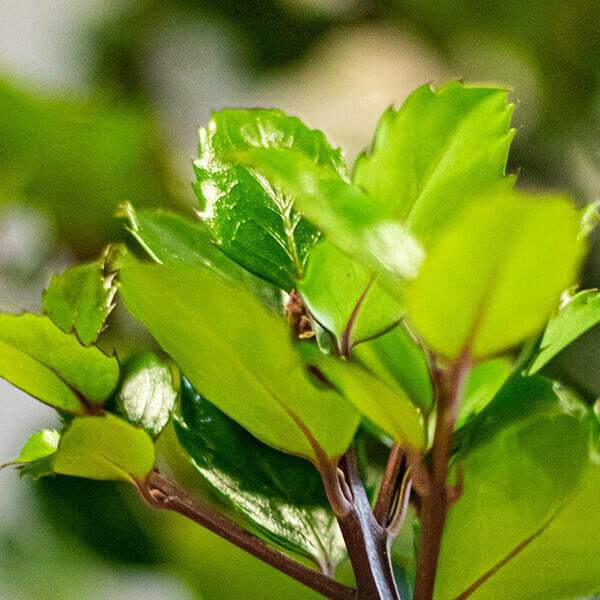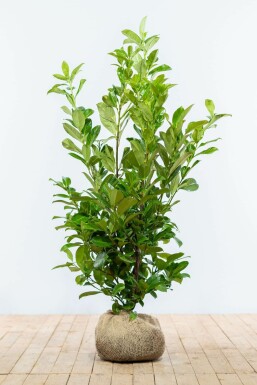Hedge Plants For Formal Borders
Hedge Plants For Formal Borders
Blog Article
Best Hedging Plants For Cottage Boundaries
Enhance your garden's appeal with lavish hedge varieties such as Yew (Taxus), Thuja, Laurel, Photinia, and Bamboo, celebrated for their structural stability and ecological advantages.
Yew and Thuja provide evergreen coverage and winter strength, while Laurel uses quick growth and broad, fragrant leaves.
Photinia adds seasonal appeal with its vibrant red foliage, and Bamboo lends a low-maintenance, peaceful atmosphere.
These hedges enhance air quality, minimize sound, and develop tranquil, personal areas.
Correct planting, spacing, and upkeep make sure energetic development and ecological harmony.
Explore how these lush varieties can raise your garden's appeal and well-being.
Key Takeaways
Transform Your Garden With Lush Hedge Varieties
- Select Yew for its dense, evergreen growth and unparalleled longevity.
- Opt for Laurel for its fast development and broad leaves, making sure fast privacy.
- Choose Photinia for its dynamic seasonal foliage, which turns a striking dark red.
- Utilize Bamboo for a low-maintenance, winter-hardy hedge with aesthetic appeal.
- Area plants 2-3 per meter and prune frequently for ideal growth and health.
Popular Hedge Plants
When transforming a garden with lavish hedge ranges, it's important to consider popular hedge plants such as Yew, Thuja, Laurel, and Photinia due to their unique attributes and benefits.
Yew (Taxus) is highly respected for its longevity and thick, green development, making it a prime choice for sustaining landscapes.
Thuja is kept in mind for its evergreen foliage and robust winter strength.
Photinia includes seasonal vibrancy with red leaves that darken in time, producing dynamic visual appeal.
Laurel uses fast growth and aromatic, broad leaves, suitable for fast personal privacy.
Additionally, Bamboo is an excellent option for ambiance, using a low-maintenance, winter-hardy choice that boosts the garden's visual with its elegant, swaying walking canes.
These selections deal with a variety of horticultural requirements and choices.
Benefits of Garden Hedges
Garden hedges use a wide range of advantages, making them a valuable addition to any landscape. These natural barriers are economical to implement and supply significant wind security, boosting air circulation and adding to sound reduction. The dense foliage of hedges like Thuja and Beech guarantees personal privacy by obstructing exposure, developing a serene and remote environment.
Hedges likewise play a vital role in microclimate regulation, offering a steady environment that cultivates plant development and minimizes temperature fluctuations. Their complex leaf structures filter contaminants, enhancing air quality and adding to a much healthier garden environment.
Moreover, hedges excel in noise reduction, absorbing and deflecting sound waves to lower ambient noise levels. This dual functionality of providing both visual and acoustic privacy enhances the overall tranquility and aesthetic appeal of any garden.
Planting and Upkeep Tips
For an effective hedge, meticulous preparation of the planting area is crucial. Ensure the soil has proper pH and drain to support strong root advancement.
Area the plants properly for the selected species. Water the hedge frequently throughout its preliminary development phase, adjusting as needed with seasonal modifications.
Execute a systematic bug control and disease prevention technique, using natural or chemical treatments when required. Frequently examine for aphids, mites, and fungal infections.
Apply mulch to keep moisture and suppress weeds. Seasonal pruning promotes thick growth and air blood circulation, vital for plant health.
Following these guidelines will help you cultivate a lively, well-kept hedge that boosts the charm of your garden.
Spacing and Cutting Guidelines
Spacing and Cutting Standards
Proper spacing and cutting are vital for cultivating healthy, visually appealing hedges. Appropriate spacing ensures each plant receives enough nutrients, light, and airflow.
Follow these guidelines for ideal hedge upkeep:
- Spacing: Position hedge plants 2-3 plants per meter to encourage robust growth.
- Pruning Strategies: Regular pruning is important for preserving wanted hedge height and shape. Trim new growth in summertime and cut down older wood throughout winter.
- Seasonal Care: Adjust trimming schedules and approaches according to seasonal requirements to make sure plant health.
- Hedge Height: Regularly monitor and trim to preserve the preferred hedge height and attain consistent aesthetics.
Sticking to these actions will ensure your hedge grows, boosting both the appeal and performance of your garden.
Choosing the Right Hedge
Choosing the Right Hedge
Selecting the appropriate hedge involves evaluating factors such as mature height, foliage density, and environmental strength. Effective hedge plant choice needs comprehending each types' growth qualities and site-specific adaptability.
For example, Yew (Taxus) uses exceptional durability and thick growth, while Thuja is notable for its winter strength. Furthermore, considering maintenance requirements is crucial; fast-growing types like Laurel or Privet need regular cutting, whereas low-maintenance alternatives like Bamboo or Ivy may be more effective for those looking for very little upkeep.
Environmental factors such as soil type, light schedule, and wetness conditions must also assist the choice process. This mindful method guarantees the chosen hedges will grow, offering both aesthetic and practical benefits to the garden landscape.
Delivery and Planting Suggestions
To guarantee your hedge plants thrive, they need to be delivered by specialized carriers and planted immediately upon arrival.
Follow these essential actions for successful planting:
- Soil Preparation: Enhance the soil with raw material to enhance drainage and nutrient content.
- Planting Depth: Develop a trench twice the width and equivalent to the depth of the root ball.
- Watering Techniques: Water completely after planting, keeping the soil regularly damp however not saturated.
- Mulching: Use a layer of mulch to retain wetness and suppress weeds.
Client Assistance and Service
Given the important function of timely support in horticultural pursuits, our consumer support team is readily available six days a week through telephone, email, and social networks to use expert recommendations and promptly deal with any concerns. Their devotion to fast response times guarantees client satisfaction by dealing with inquiries connected to plant health, optimum planting methods, and maintenance schedules.

Availability
Telephone
6 days a week
This thorough support group, strengthened by an excellent 9.3/ 10 client rating, highlights our dedication to enhancing the gardening experience for every single customer.
Regularly Asked Questions
The Length Of Time Does It Take for Hedge Plants to Develop?
Hedge plants generally require one to 3 years to become totally established, with the precise period varying by types and growing conditions.
Effective care during this important period is important for robust development. Consistent watering, watchful weed control, and proper fertilizer application are pivotal in promoting strong root development.
For instance, fast-growing types like Laurel may develop more rapidly, while slower-growing varieties such as Yew may take longer. Diligent upkeep accelerates the establishment procedure, resulting in healthy and thick hedges.
What Are the very best Hedge Plants for Privacy?
The concern of the finest hedge plants for privacy involves assessing evergreen and deciduous choices.
Evergreen hedges like Thuja, Laurel, and Cypress supply year-round protection, ensuring continuous privacy.
In contrast, deciduous hedges such as Beech provide seasonal privacy, shedding leaves in chillier months.
Secret upkeep tips for privacy hedges include regular trimming, fertilizing in spring, and proper spacing-- generally 2 to 3 plants per meter.
Furthermore, consistent watering and persistent weed removal are essential for promoting healthy, dense growth.
Can Hedge Plants Draw In Wildlife to My Garden?
Yes, hedge plants can attract wildlife to your garden by providing essential advantages like shelter, food, and nesting websites, consequently improving local biodiversity. For example, yew, holly, and laurel are exceptional for bring in birds, while ivy supports a range of bugs.
However, it is necessary to note that there are some downsides, such as increased upkeep to manage pests and routine upkeep. Carefully picking and preserving hedge varieties can assist stabilize these benefits and downsides, eventually promoting a vibrant and sustainable community in your garden.
Are There Any Blooming Hedge Plants Available?
Yes, there are flowering hedge plants offered that can enhance the charm of your garden.
For example, Elaeagnus, likewise referred to as Olive Willow, produces aromatic white flowers in the fall, adding a touch of sophistication.
Photinia, another popular choice, showcases lively red leaves that develop into an abundant green, producing a dynamic visual impact throughout the seasons.
To ensure these plants prosper, it's vital to practice correct pruning techniques and seasonal upkeep, such as trimming brand-new development in the summertime and cutting down in the winter.
These steps will help preserve the health and visual appeal of your flowering hedges.
How Do I Prevent Bugs in My Hedge Plants?
To prevent insects in hedge plants, use natural pest control techniques and keep proper hedge care. Introduce helpful insects like ladybugs, which take advantage of damaging pests, to create a well balanced ecosystem.
Routinely examine your hedges for indications of infestation and quickly get rid of any afflicted parts to avoid the spread. Ensure the health of your hedges by applying balanced fertilizers and offering appropriate water.
Make use of mulching to maintain soil moisture and proper spacing to minimize plant stress and promote robust growth. These practices collectively assist in reducing bug concerns and maintaining a healthy hedge.
Conclusion
In essence, choosing the right hedge varieties such as Yew, Thuja, and Laurel can transform any garden into a peaceful haven. These plants offer year-round greenery, enhance aesthetic appeal, and get more info offer practical benefits like sound decrease and wind defense.
Correct planting strategies, precise spacing, consistent watering, and seasonal trimming are important for optimal growth.
Dependable delivery services and expert customer assistance make sure a seamless experience from purchase to planting, making it simpler than ever to elevate your outside area.
Garden hedges provide a wide range of benefits, making them a valuable addition to any landscape. These natural barriers are cost-efficient to carry out and offer considerable wind protection, boosting air flow and contributing to noise decrease. The thick foliage of hedges like Thuja and Beech guarantees privacy by blocking visibility, developing a remote and peaceful environment.

Pruning Strategies: Regular pruning is vital for keeping wanted hedge height and shape. Trim new growth in summertime and cut back older wood during winter season.
Report this page